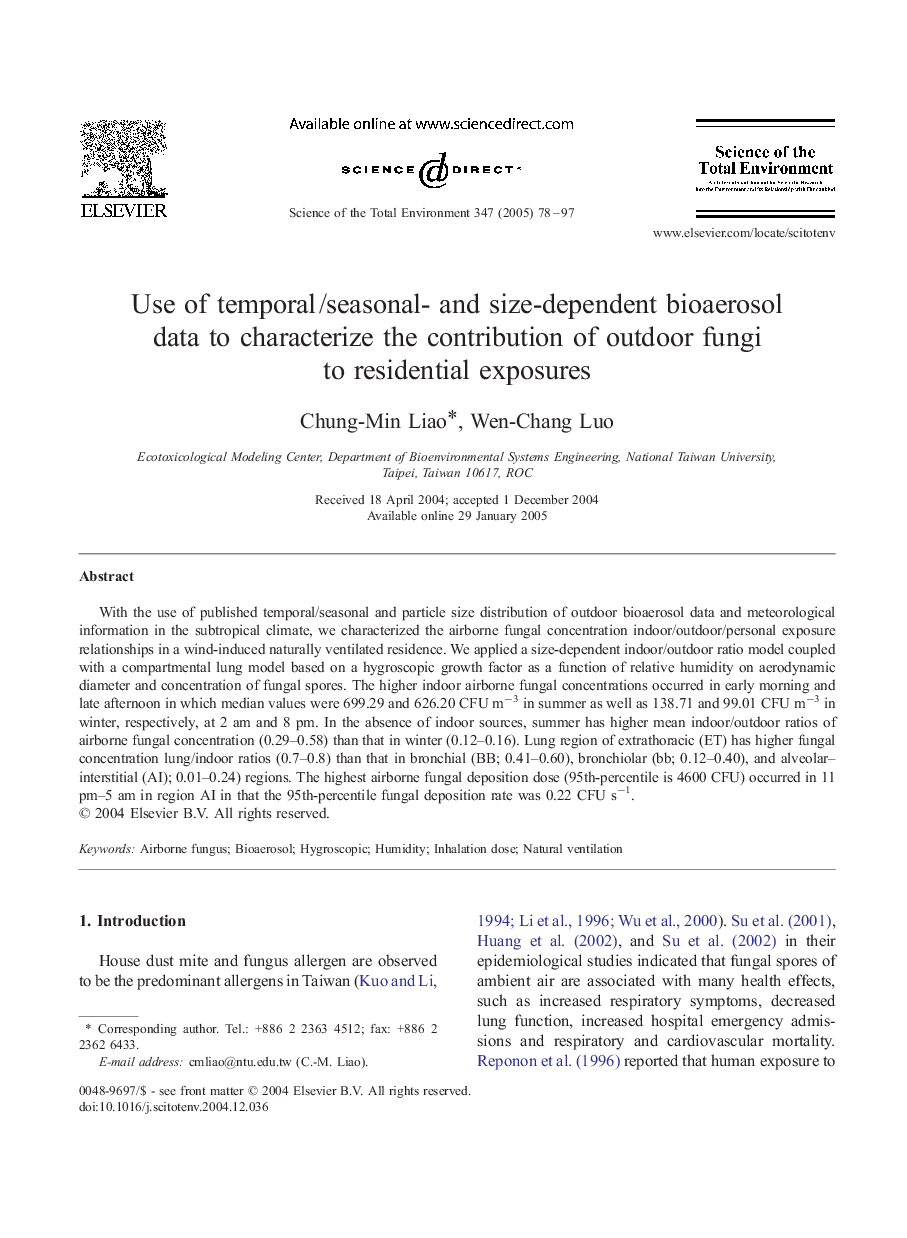| Article ID | Journal | Published Year | Pages | File Type |
|---|---|---|---|---|
| 10110680 | Science of The Total Environment | 2005 | 20 Pages |
Abstract
With the use of published temporal/seasonal and particle size distribution of outdoor bioaerosol data and meteorological information in the subtropical climate, we characterized the airborne fungal concentration indoor/outdoor/personal exposure relationships in a wind-induced naturally ventilated residence. We applied a size-dependent indoor/outdoor ratio model coupled with a compartmental lung model based on a hygroscopic growth factor as a function of relative humidity on aerodynamic diameter and concentration of fungal spores. The higher indoor airborne fungal concentrations occurred in early morning and late afternoon in which median values were 699.29 and 626.20 CFU mâ3 in summer as well as 138.71 and 99.01 CFU mâ3 in winter, respectively, at 2 am and 8 pm. In the absence of indoor sources, summer has higher mean indoor/outdoor ratios of airborne fungal concentration (0.29-0.58) than that in winter (0.12-0.16). Lung region of extrathoracic (ET) has higher fungal concentration lung/indoor ratios (0.7-0.8) than that in bronchial (BB; 0.41-0.60), bronchiolar (bb; 0.12-0.40), and alveolar-interstitial (AI); 0.01-0.24) regions. The highest airborne fungal deposition dose (95th-percentile is 4600 CFU) occurred in 11 pm-5 am in region AI in that the 95th-percentile fungal deposition rate was 0.22 CFU sâ1.
Related Topics
Life Sciences
Environmental Science
Environmental Chemistry
Authors
Chung-Min Liao, Wen-Chang Luo,
